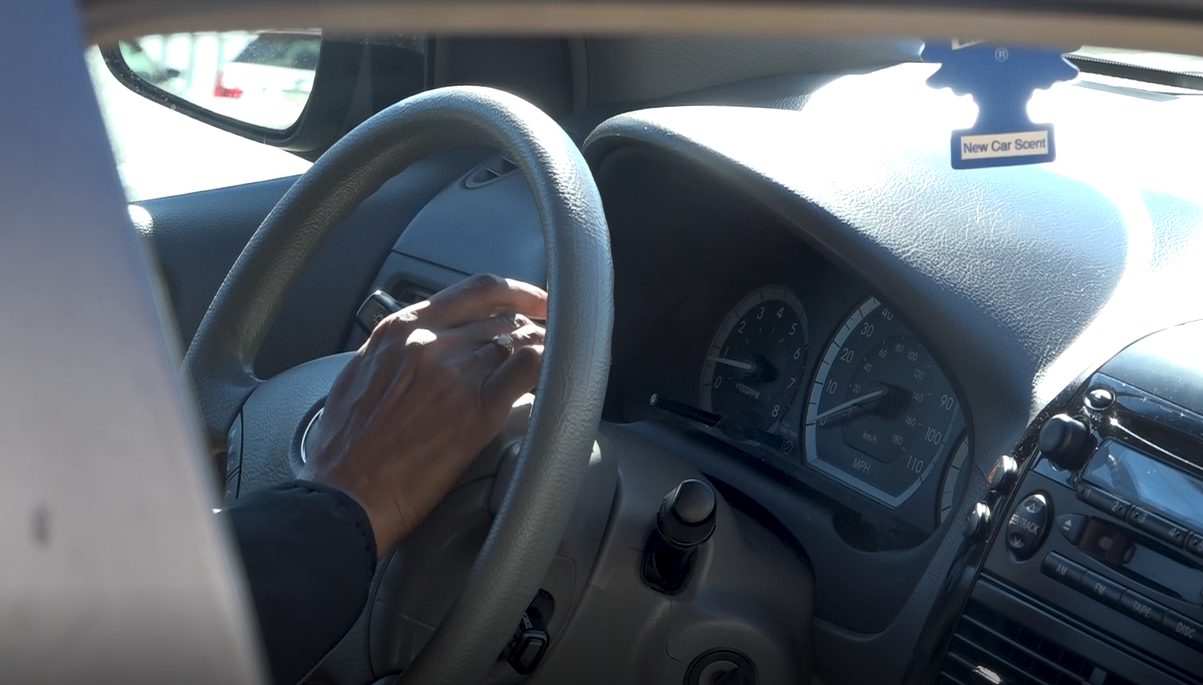CHELTENHAM TOWNSHIP, Pa. (WLVT) - We’re all familiar with road rage.
You can’t drive a car without being exposed to some or even experiencing it yourself.
Ranging from rude gestures to dangerous driving practices that can be life-threatening, road rage can lead to arguments, physical confrontations and even death.
“Suppose somebody cut you off. Just let it go, boy, and forget all about it,” said East Oak Lane resident Sheila Blackman. “People today are too angry, too much in a hurry, with no place to go.”
Cheltenham Township Police are still searching for a suspect the shooting death of 29-year-old Rithina Torn, in an incident police say was caused by road rage. Around 9:30 p.m. Oct. 15, a car drove in front of the vehicle Rithina was a passenger in and cut them off, police said. He got out of the car, potentially to confront the driver of the other vehicle, when that driver shot him multiple times.
Road rage and aggressive driving are common on U.S. roads. In a 2016 study by the AAA Foundation for Traffic Safety, 78.1 percent of participating drivers reported engaging in at least one kind of aggressive driving behavior in the previous year. The most common reported forms of road rage were intentional tailgating (50.8 percent), yelling at another driver (46.6 percent), honking to show annoyance or anger (44.5 percent), trying to block another vehicle from changing lanes (24.2 percent), cutting off another vehicle on purpose (11.9 percent), getting out of the vehicle to confront another driver (3.7 percent), and bumping or ramming another vehicle on purpose (2.8 percent).
“I’ve stuck my finger up or something like that, but I wouldn’t go as far as to roll my window down to make a comment to someone, because I try not let myself get into that mode like that, to get that angry,” said Philadelphia resident Suncire Harris.
Road rage is even more common in this region. The Allstate Best Drivers Report 2018 ranks Philadelphia number one for car collision frequency in cities with more than one million people. Overall, it ranks as the 191st safest driving city out of 200 ranked cities.
Aggressive driving causes 33 percent of traffic accidents, and 66 percent of fatal accidents, according to the National Highway Traffic Safety Administration.
So what is it about the Philly area that makes us such angry drivers?
Doreen Loury, a sociology professor at Arcadia University, said one has to look below the surface to find the causes of road rage.
“I’m willing to say from a psychological point of view, what happened at that particular moment has absolutely nothing to do with it,” she said.
Daily stresses and irritations can build until a rude driver becomes the last straw.
“You’re driving. You get up somewhere and you see someone and they either cut you off or say something to you,” Loury said. “That’s a trigger and all those emotions come out. You have no control. Here’s another place I have no daggone control. I can have control over this situation. Getting out of the car, hollering, screaming, cussing. God help us all, if I have a weapon, I’m going to use it.”
The current divisive national political climate is also contributing to more people being angry, Loury said: “In looking at what’s going on with the way people are feeling today, I think there’s a sense of hopelessness, loss, fear, aggravation, and people don’t know what to do with themselves.”
And more locally, the Mid-Atlantic culture that sometimes normalizes brusqueness and violence causes more people to be violent, according to Loury.
“When you adapt to a culture that’s violent, you may be a non-violent person, but you feel you’ve got to stand your ground in order to survive,” Loury said.
Her best advice: don’t let it get to you.
“I have never gotten that mad at somebody in a car. Life is a little too short for that, for me,” she said.
Even if rude driving behavior does bother them, other drivers find their own ways to avoid anger.
“Somebody might comment. I say nothing because you never know who has a gun and who’s ready to shoot,” Blackman said.
“Calm yourself down,” Harris said. “If you have to count down one to 10, you do what you have to do to bring that temperature down. That’s the way I look at it.”
The Pennsylvania Department of Transportation offers several tips for when you encounter an aggressive driver: get out of their way, stay relaxed, avoid eye contact and ignore rude gestures.
And you can prevent other drivers from getting angry at you by driving defensively, not talking on the phone while driving, and not purposely cutting other drivers off.
Authorities are actively working to reduce road rage. PennDOT began a project Oct. 22 working with state and local police to monitor roadways for aggressive driving behavior such speeding, tailgating, and not driving right, passing left. The Pennsylvania Aggressive Driving Enforcement and Education Project (PAADEEP) runs throughout the state until Nov. 25.



